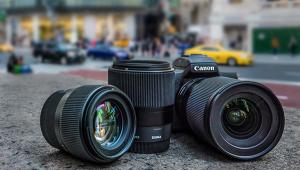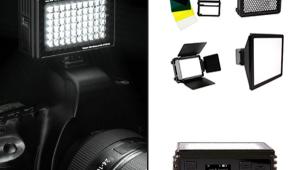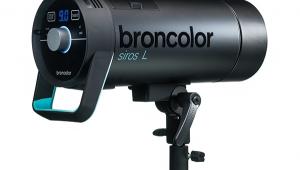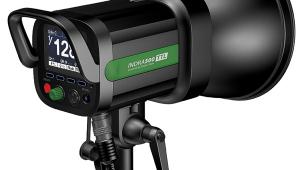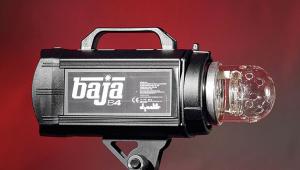Flashpoint XPLOR 600 HSS TTL Monolight Review: A Value-Packed & Versatile Flash

 I doubt anyone could foresee the rapid changes digital technology has brought to photography. As a veteran of the business (40+ years), we have come a long way from the match-needle metering and manual flash units of the past. Heck, I can remember when thyristor circuits were a big deal because they could help us automate flash exposures.
I doubt anyone could foresee the rapid changes digital technology has brought to photography. As a veteran of the business (40+ years), we have come a long way from the match-needle metering and manual flash units of the past. Heck, I can remember when thyristor circuits were a big deal because they could help us automate flash exposures.
Well, fast forward a couple of decades or more and take a look at what’s on today’s menu. We’re looking at a 600 Watt-second (Ws) flash with an exchangeable battery that will give you more than 500 full-power pops on each charge. If that’s not enough, you can buy another battery for $150. In addition, the flash is full TTL and HSS with Nikon, Canon, and Sony; it has a nine-stop range; and you can control this unit and several others with the included R2 transmitter. And this entire wonder light will only cost you $750.
How can that be? Is it that perfect? Will it cook your breakfast?
For the answers to those questions and much more, let’s take the Flashpoint XPLOR 600 monolight for a spin.
Build & Features
When I cut open the shipping box for the Flashpoint XPLOR 600 monolight, I was delighted to see a nice nylon case that contained everything. The little suitcase has a carry handle plus a shoulder strap for easy portability—nice. Checking it out I found the light, the battery, the flash tube, the charging cords, the R2 transmitter, a basic instruction booklet for the light and the transmitter, and a standard seven-inch reflector using the popular Bowens mount.
Pulling the XPLOR 600 out of the case, I proceeded to mount it on a light stand and immediately ran into one of the very few issues I had with this product. The light sits on a ratchet handle. I loosened it up and went to turn the handle so I could mount the light but it was a no-go. I thought it was broken! As a reviewer, the last thing I wanted to do was to return a product that I busted up but I forced it and it finally moved. As I used it more I got used to the very heavy ratchet but it is quite inelegant and I always felt like I was going to break it. While it doesn’t affect performance, it hurts usability, so I’d suggest to Flashpoint that they take a look at another option.


As for the build of the XPLOR 600, it appears to be metal where warranted, like the Bowens mount and the battery mount, and plastic in the main body area to ostensibly save on both weight and cost.


The first thing I did with the XPLOR 600 was plug in the flash tube and charge up the battery. A full charge from a spent battery takes four hours. The battery is pretty substantial, as you’d expect from something that gives you that many flashes. It also has a very handy button on it that you press to see how much power you have left. All in all, this battery is a winner with quick charging, a solid connection to the light, tons of power, and a great price.
Design & Layout
Turning our attention to the body of the XPLOR 600 monolight, we see the big and bright LCD panel on the side next to several buttons that control the various flash functions. Hold the on/off button down for two seconds to turn everything on and light up the screen.
Here are some of the things you’ll notice immediately. The XPLOR 600 can handle five groups and 32 channels, which should be enough for just about anyone. Of course, I had one light so I did not have the opportunity to use multiple groups. It should be noted that there are many options that allow you to use the XPLOR 600 with several other speedlights with no modification and even with Nikon and Canon with adapters. That is beyond the scope of this review though.

You’ll also notice that LED technology now allows you to have modeling lights. Incandescent bulbs would kill your battery in about one minute but with this 10W-rated bulb it should be bright enough in the studio and to use for focus assist in some situations. It even has three different levels to help save battery power. Outside in bright light it is of very little use so I just shut it off.
Other controls are what you’d expect, like mode, group, channel, and menu. The one that stands out is the “H” button for High Speed Sync, as it has a couple of unique features. First, if you are using the R2 remote, the transition from regular to HSS is seamless—you don’t need to turn it on at all. Just set whatever speed you like up to 1/8000 second and the flash will adjust automatically. Just remember that all those flashes pulsing during the exposure will need to be rather close to your subject to get enough firepower. I used it beachside on a sunny day within 10 feet and didn’t experience any issues.

The second unique feature about the “H” button is that it will display the flash speed at different levels when set to manual. The duration at full power is only 1/220 second—not very fast. Clicking down through the power settings reveals faster flash durations at lower power settings. To speed things up you can use HSS in some instances to just boost shutter speed but you’ll have to decide if this is an issue for you.
My “scientific” testing of the XPLOR 600 resulted in popping it a few times to get a Guide Number (GN) and to check recycle time. I measured f/22 at 10 feet with the standard reflector for a GN of 220 at ISO 100, a little higher than the 183 listed in the spec sheet. I’m guessing they are conservative in their rating. It’s much tougher to measure the recycle time at full power. Using the stopwatch on my iPhone I got approximately two seconds. Figure a little over that and you’ll be good.
As far as the R2 transmitter, it does require a few minutes spent with the manual. It has three major buttons and a wheel for adjustments, but you can figure it out pretty quickly. Some nice features are a test button, an on/off button for AF assist, and even a hot shoe on top so you can also fire a speedlight while using the R2. It’s also powered by two AA batteries, which are available everywhere.
Conclusion
Although you’ll find specific comments in the photo captions, here is a summation of the Flashpoint XPLOR 600 monolight. At $750, it meets or exceeds many other lights in this class at a fraction of the price. Accessories like additional batteries are also very aggressively priced. The XPLOR 600 does special tricks like allowing you to configure it (with low-priced options) as a two-piece light so you can hang just the head on a boom and also be able to combine two power sources with one head for a 1200 Ws light! You also have the ability to use other speedlights to be able to control several flash units from the camera. The one feature that I hope is looked at in the future is the ability to shoot TTL and once you have the exposure nailed, you have the option to lock that exposure down. It’s a very useful feature that would make a terrific light even better.


One more thing I should address: low-priced units like this are often inconsistent in color temperature. Flashpoint states a 200K variation. While I suspect it may be slightly more, I have no way of checking. In any case, unless you are shooting very critical work with multiple units it is not an issue. Simply adjust the Raw file in Lightroom or Photoshop and you’re done.
I can’t recommend the Flashpoint XPLOR 600 monolight highly enough. I know what’s out there and have tested many of the units. If you want an all-in-one monolight that is high powered and low priced, plus has a great battery along with HSS and TTL, this is it. I just hope they change the handle.

